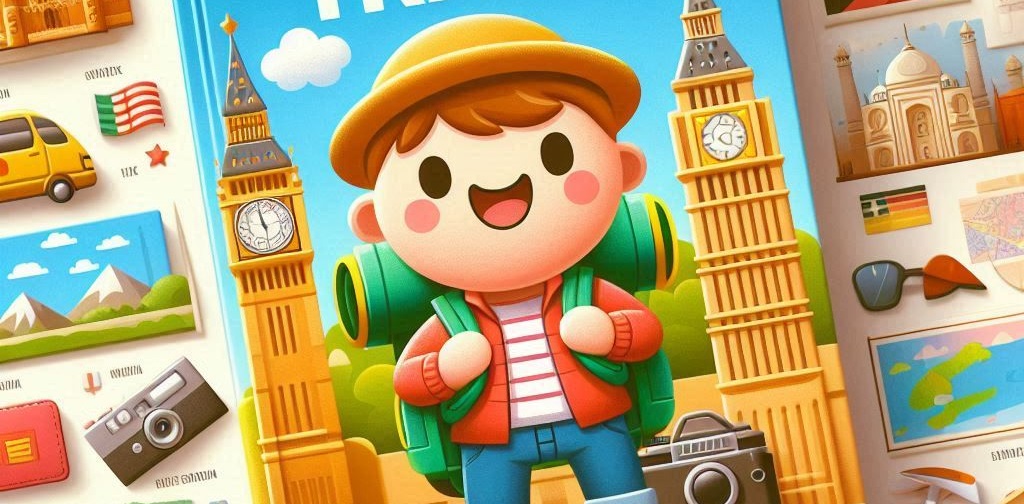Traveling is often seen as a luxury, but with careful planning and smart decisions, it can be affordable for almost anyone. Whether you dream of backpacking across Europe, exploring Southeast Asia, or taking a road trip across your home country, budget-friendly travel is possible with the right strategies.
Read More: Top 10 Tourist Destinations in Pokhara: Exploring Nepal’s Adventure Hub
In this guide, we’ll explore some of the best ways to save money on every aspect of your trip, from transportation and accommodation to food and activities.
1. Set a Realistic Budget
Before diving into the specifics of budget travel, it’s crucial to start by setting a realistic budget. Determine how much you can afford to spend and break it down into categories like transportation, accommodation, food, and activities. This will help you make informed decisions and avoid overspending. Use budgeting apps like Trail Wallet or TravelSpend to track your expenses during the trip and stay on course.
2. Be Flexible with Travel Dates
One of the biggest factors influencing the cost of travel is timing. If you’re flexible with your travel dates, you can save a significant amount of money on flights, accommodation, and even activities. Consider traveling during the shoulder season, which falls between the peak and off-season. During these times, you’ll enjoy cheaper prices and smaller crowds without compromising on good weather or experiences.
If you have specific destinations in mind, use flight comparison tools like Google Flights, Skyscanner, or Kayak to monitor fare prices. Set alerts for price drops and be prepared to book when you find a great deal.
3. Travel to Budget-Friendly Destinations
Some countries are much cheaper to travel to than others, making them perfect for budget-conscious travelers. Southeast Asia, Eastern Europe, and Central America are known for being affordable travel destinations. In countries like Thailand, Vietnam, Hungary, and Guatemala, you can enjoy amazing experiences, meals, and accommodation at a fraction of the cost you’d spend in more expensive countries like France or Australia.
By choosing budget-friendly destinations, you’ll find that your money goes further, allowing you to experience more without breaking the bank.
4. Find Affordable Flights
Airfare is often one of the most expensive parts of any trip, but there are several strategies you can use to find cheap flights:
- Be flexible with airports: Consider flying into smaller or nearby airports rather than major hubs. Sometimes a short train or bus ride from a nearby city can save you hundreds of dollars on airfare.
- Use budget airlines: Budget airlines like Ryanair, EasyJet, and Southwest offer cheaper flights by cutting down on frills. Just be mindful of extra fees for things like luggage or seat selection, and travel light to keep costs down.
- Search for error fares: Occasionally, airlines or booking websites make mistakes and list flights at significantly lower prices than usual. Websites like Secret Flying and Scott’s Cheap Flights share these deals, allowing travelers to snap up incredibly low fares.
- Book flights in advance: While last-minute deals do exist, booking flights several weeks or months ahead of time usually results in lower prices.
5. Use Public Transportation
Once you’ve arrived at your destination, resist the temptation to rely on taxis or ride-sharing apps. Public transportation is typically much cheaper and gives you a more authentic experience of the local culture. In many cities, buses, trams, and trains offer convenient and affordable ways to get around. In some destinations, you can even rent bicycles or scooters to explore at your own pace while saving money.
If you’re traveling between cities or countries, look for budget options like buses or trains instead of internal flights. In Europe, companies like FlixBus and Eurolines offer affordable, long-distance bus routes, while many countries have rail passes for tourists that offer unlimited train travel for a set period.
6. Save on Accommodation
Accommodation can eat up a significant chunk of your travel budget, but there are many ways to reduce this cost:
- Hostels: For solo travelers or those who don’t mind shared spaces, hostels offer incredibly cheap accommodation options. Many hostels also provide private rooms at lower prices than hotels.
- Airbnb or vacation rentals: Renting an apartment or house through Airbnb or other vacation rental sites can be more affordable, especially if you’re traveling with a group. You can save even more money by cooking some of your own meals.
- House-sitting or home exchanges: Websites like TrustedHousesitters allow you to stay in someone’s home for free in exchange for watching their pets or taking care of their property. Alternatively, consider doing a home exchange where you swap houses with another traveler for a set period.
- Camping: If you’re traveling in nature or rural areas, camping is a great way to save money. Many national parks and scenic areas have affordable campgrounds, and you’ll get to enjoy a more immersive outdoor experience.
7. Eat Like a Local
Dining out can quickly add up, especially in touristy areas where restaurants often inflate prices. To save money on food, eat like a local. Seek out street food stalls, food markets, and smaller local restaurants where locals dine. Not only will you enjoy authentic cuisine, but you’ll often pay much less than you would at a sit-down restaurant.
Another way to save on food costs is by buying groceries and preparing some of your own meals, especially if you’re staying in an Airbnb or hostel with a kitchen. You can still experience local flavors by buying fresh produce, bread, and snacks from markets and grocery stores.
8. Embrace Free and Low-Cost Activities
Many destinations offer free or low-cost activities that allow you to experience the culture, nature, and history without spending a fortune. Here are a few ideas:
- Explore public parks and beaches: Nature is often free, and spending time in public parks, beaches, and hiking trails can provide some of the most memorable experiences of your trip.
- Free walking tours: Many cities offer free walking tours led by local guides. These tours are usually tip-based, so you can decide how much to contribute based on your budget and satisfaction.
- Visit museums on free days: Some museums offer free admission on certain days or during specific hours. Research ahead of time to take advantage of these opportunities.
- Use city passes: In some cities, purchasing a city pass can save you money on multiple attractions, transportation, and even dining.
9. Travel Light
Packing light is not only convenient but can also save you money. Many budget airlines charge high fees for checked luggage, so traveling with just a carry-on can cut down on costs. Plus, traveling light means you won’t have to worry about extra baggage fees or the hassle of dragging a heavy suitcase through crowded streets or up flights of stairs.
Pack versatile clothing items that you can mix and match, and be mindful of any specific items you’ll need for your destination (such as appropriate shoes for hiking or a travel adapter for electronics).
10. Be Open to Volunteer Work or Work Exchanges
For long-term travelers or those looking to stretch their budget even further, consider volunteering or doing a work exchange in exchange for free accommodation and sometimes meals. Websites like Workaway and HelpX connect travelers with hosts around the world who need help with various tasks such as farming, teaching, or hospitality. This can be a great way to immerse yourself in the local culture, make new friends, and save money while traveling.
Conclusion
Budget-friendly travel is all about smart planning, flexibility, and making informed choices. By choosing affordable destinations, taking advantage of deals, and finding creative ways to save on food, transportation, and accommodation, you can make your travel dreams a reality without emptying your wallet. With the right mindset, every adventure can be both memorable and affordable!







